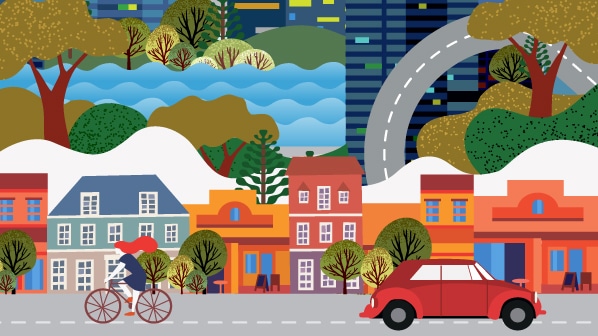UNA Response to the Updated Draft Land Use Plan
By UNA
 CANCEL SEARCH
CANCEL SEARCH

In February, the UNA called on UBC to prepare a Land Use Plan that includes specific environmental targets tied to a Neighbourhood Climate Action Plan, a goal of 50% rental housing in campus neighbourhoods, and a commitment to 5 hectares of green space per 1,000 inhabitants. These goals reflect resident support for sustainable, affordable, and livable neighbourhood development, as well as the University’s own commitments on climate, housing availability and affordability, and the quality of its urban form. The draft Land Use Plan presented to the Board of Governors falls well short of these goals and aspirations. The Land Use Plan should be revised before the Board votes on its approval.
The draft Land Use Plan has weak language on climate action, offering only to “work towards the targets and policies” of the University’s 2020 Climate Action Plan. UBC has not actually completed an updated Climate Action Plan for its neighbourhoods; it has not done GHG measurements nor set carbon targets to guide present or future land use planning.
The UNA’s position:
Before approving a new Land Use Plan, UBC should complete a comprehensive Climate Action Plan that includes the University neighbourhoods.
The Neighbourhood Climate Action Plan should:
The new LUP should include a strong commitment to the Climate Action Plan’s GHG and carbon targets, setting parameters for building types, green infrastructure, and density that will put the University on track to achieve those targets.
In spite of resident, student, faculty, staff, and provincial calls for bold steps to address shortages of rental housing, the draft Land Use Plan commits to a target of only 30% of UBC neighbourhood housing being rental. This is no more than the amount of rental achieved by the Housing Action Plan update of 2018.
The UNA’s position:
The housing crisis at UBC and across the Lower Mainland calls for much bolder commitments to housing availability and affordability.
UBC should:
The draft Land Use Plan promises 1.1 hectares of open/green space per 1000 residents, which is at the lower end of the World Health Organization’s recommended range of .9 to 5 ha. But the LUP reduces this to .5 ha in the case of “appropriate resident access to UBC-owned open space and facilities.” This is very low, and would seriously compromise livability and the University’s commitment to ecological and climate goals for the neighbourhoods. While residents do benefit from some open spaces adjacent to the Hawthorn neighbourhood, most UNA residents live several hundred meters from any regularly accessible open spaces on the academic campus. These spaces do not compensate for the abundant parks, trees, and informal play spaces that are foundational for healthy and sustainable communities.
The UNA’s position:
In order for the University to meet its climate targets, its open-space obligations to residents, and its commitments to sustainability and ecological responsibility, the LUP should increase levels of per capita green space in campus neighbourhoods.
Before completing a Land Use Plan, UBC should
The draft Land Use Plan advances a plan to sharply increase housing density on UBC’s remaining land endowment by building at least twenty new towers, many over thirty stories tall. To date, UBC has been relatively successful at building dense neighbourhoods of mostly mid-rise housing. The draft LUP diverges sharply from the current model, proposing to nearly double those densities in new developments at Stadium Road, Acadia Park, and on the edge of the Wesbrook neighbourhood.
The UNA’s position:
UBC should retain its current scale of neighbourhood development, building compact, green, human-scaled communities. These wood-based neighbourhoods should comprise a mix of low- and mid-rise apartment buildings, stacked townhomes, and a small number of mass-timber high-rises no higher than twenty stories. They should be beacons of green urbanism in an academic setting, rather than islands of concrete towers at the far western fringe of Vancouver.
UBC’s campus and neighbourhoods should be models of low carbon, sustainable, socially responsible, community-oriented urban planning. The Board of Governors should seize this once-in-a-lifetime opportunity to establish UBC as a global leader in campus urbanism. We urge the Board to press for revisions to the Land Use Plan that will reflect these aspirations, as well as the values and public mission of the University.
To learn more about UNA’s response to the UBC draft land use plan, visit myuna.ca/campusvision2050